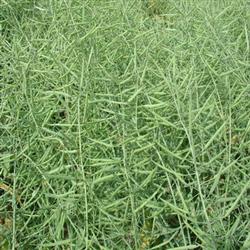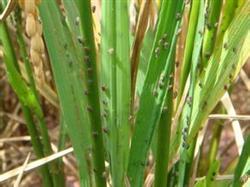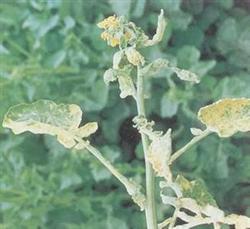How to fertilize rape in winter

Most of the late-planted rapeseed are transplanted by grabbing the rain gap. Due to the serious consolidation of the soil, the rape should be ploughed in time to loosen and hoe the soil to promote root growth. Transplanting rape can eliminate weeds in the field through mid-tillage, dig the topsoil deep and break the soil clods. When rape survives and returns to green, it is appropriate to hoe deeply when it is ploughed, loosen and mow the soil, and do a good job in cleaning up the three trenches in combination with mid-ploughing, so that the trenches, perimeter ditches, waist ditches and trenches are connected. So that the drainage is smooth, the field is not waterlogged, in order to increase the ground temperature. Skillfully applying seedling fertilizer should be applied in time after transplanting and turning green. The earlier the better, generally use urea 350kg / mu, potassium chloride 5kg / mu, boron fertilizer 300kg / mu, 750 kg / mu water fertilizer 750kg / mu, topdressing twice, or ammonium bicarbonate 45kg / mu to promote green as soon as possible, make full use of the higher temperature after sunny weather, and promote rape to root and grow leaves early. The heavy application of wax fertilizer is mainly organic fertilizer, and the fields with medium fertility are 1000 kg to 1500 kg per mu, 10kg to 12kg superphosphate and 7.5 kg to ammonium bicarbonate per mu. The three kinds of fertilizers are mixed together and applied to rape rows, combined with middle ploughing and cultivation to keep warm, promote roots, protect roots and increase fertilizer after choking. Foliar spraying phosphate fertilizer and foliar spraying phosphate fertilizer solution can enhance its cold resistance. the specific method of how to plant rape to prepare phosphate fertilizer solution with high yield is to take 2 kilograms of ground phosphate fertilizer per mu, put it into a container and soak with proper amount of water, and take it out after a week. Add 200 grams of urea spray to the leaves until the leaves begin to drip. If the container is small and the phosphate fertilizer solution is not enough, a small amount of water can be added to provide the maximum absorption of the leaves in order to reduce the evaporation of the solution, it should be sprayed in the afternoon without strong wind at an interval of one to two weeks. According to practical observation, on the third day after spraying, that is, some leaves that were frozen yellow turned green again, and the growth rate speeded up rapidly. after spraying for the second time in a week, the leaves increased from the original four or five to eight or nine, and the leaves were green, the leaf stems were strong, and the leaves were thick, straight and stretched. Control early bolting and late planting rape is easy to produce early bolting and early flowering due to weak vegetative growth before winter, which can be controlled according to the situation. First, deep ploughing is carried out on the fields with good growth and sufficient fertility. Second, re-application of nitrogen fertilizer can be used in rape fields with poor growth, which can effectively delay vegetative growth, increase growth and prevent the occurrence of early bolting and early flowering. It is an important measure to solve the problem of late planting rape to gain high yield by fertilizing and strengthening seedlings in spring. In general, after the Beginning of Spring, urea is applied 8 to 10 kilograms per mu, and then 5 to 7 kilograms during the bolting period, in order to build a high-yield seedling rack. Rely on the re-application of spring fertilizer to strengthen the seedling frame to achieve the goal of high yield. Strictly prevent the occurrence of downy mildew in late rape after spring, in the bolting stage, you can choose methomyl, Hekuling and other pesticides to control.
- Prev

Rice brown planthopper
Rice brown planthopper is also known as brown planthopper, commonly known as Ascaris lumbricoides, soft shell Ascaris, Ascaris, midges. Scientific name Nilaparvatalugens (Stdl) Homoptera, Homoptera. Brown planthopper (Nilaparvata lugens) is one of the main rice pests in China.
- Next

Beware of virus disease in rape seedlings
The characteristics of rape seedling virus disease in seedling bed are as follows: 1. During soil preparation, when applying farm manure such as pig manure, cow manure, chicken manure and so on, rape seedlings do not suffer from the disease. 2. No farm manure was applied, but only ammonium bicarbonate was applied to the seedling bed, the disease of rape seedlings was serious. 3, the same variety, the same amount of fertilizer, fertility.
Related
- The first cup of black tea in spring, the flavor and history of tea gardens in Kenya, Africa
- The computer can not only choose potatoes, but also grow tea rice. AI will grow winter oolong tea champion.
- It is not only the inflated tea bitten by insects, but also engraved with the four seasons tea in Beipu.
- The Oriental Beauty Tea Festival in Zhuxian County takes the stage at the weekend to experience the plus-size feast of oil tea.
- & quot; Oriental Beauty Tea & Exploration of Emei in Hsinchu, the hometown of quot;
- The new variety of strawberry "Tainong 1" dessert is the first choice with mellow aroma. Crimson gorgeous
- History of Tea in Taiwan: from Wild Inner Mountain to Export Tea Garden
- Two types of Taiwan Oriental Beauty Black Tea won the British three-Star Award for Childhood Tea Xiang Zhang Jiaqi changed from pilot to champion tea maker.
- Banana species and varieties: the planting history of Taiwan Xianren banana and dwarf banana is long, is banana disease resistant?
- Coffee planting Technology: Qianjie Coffee from Seedling to harvesting

